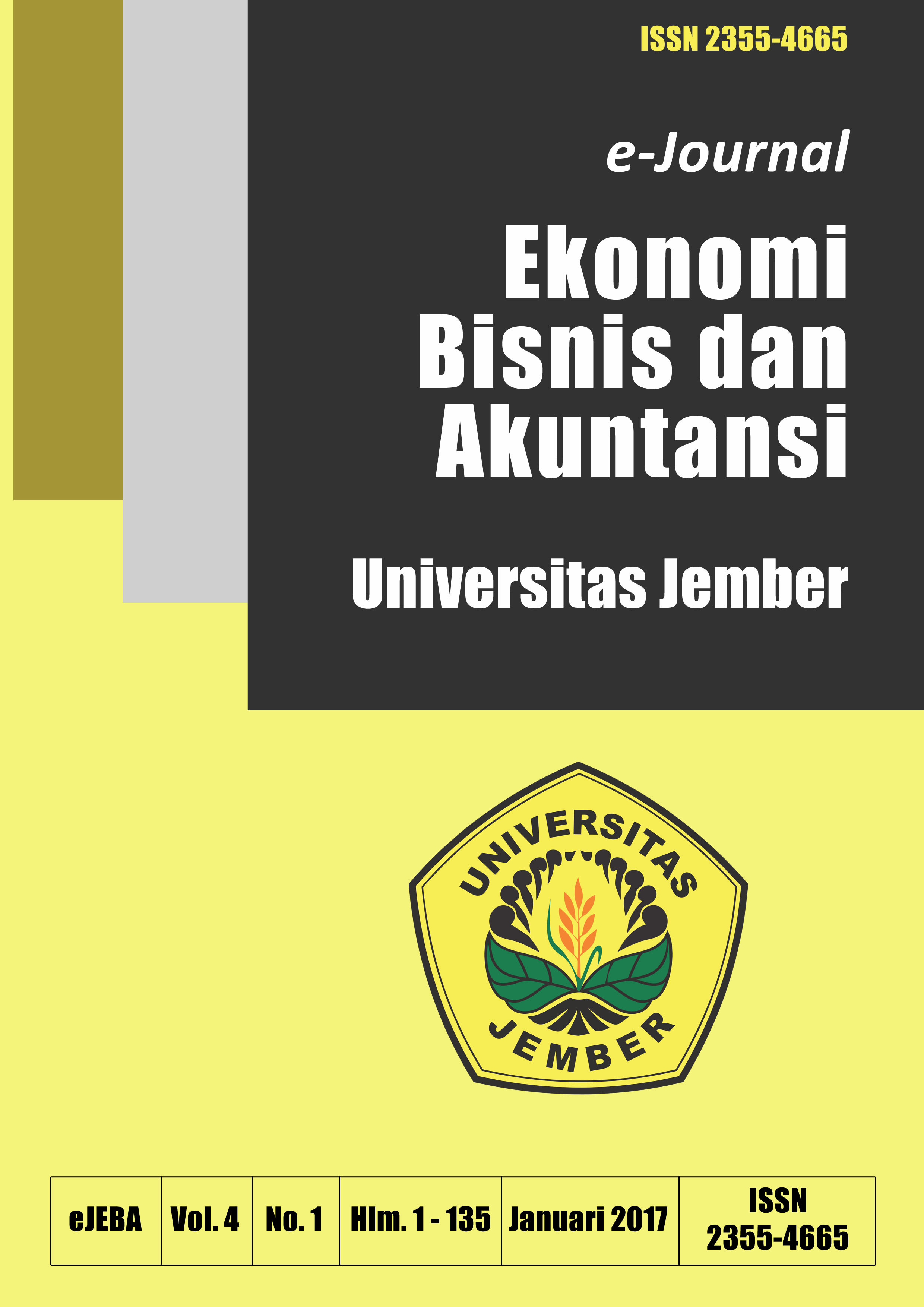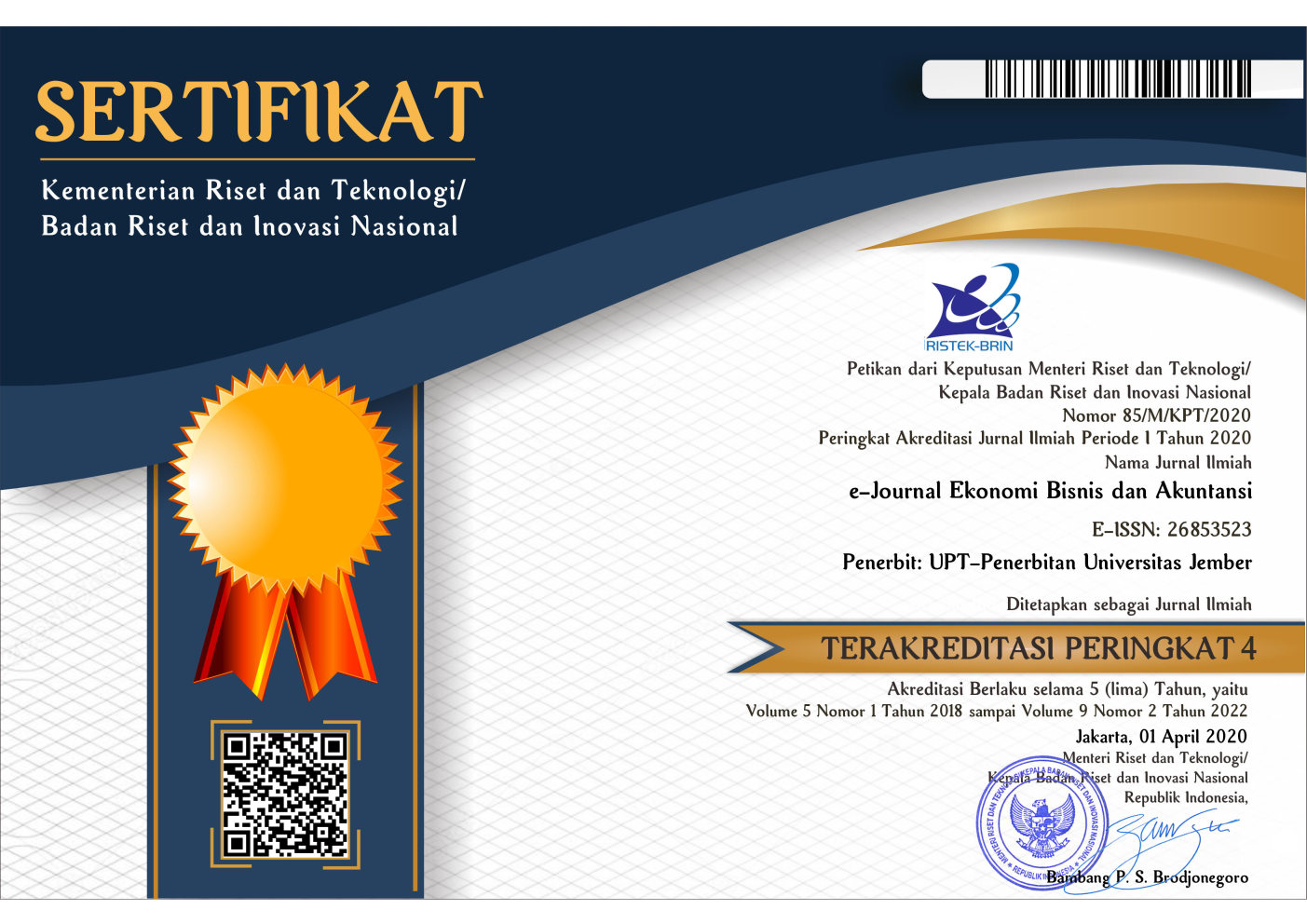Faktor-Faktor yang Mempengaruhi Tingkat Pengangguran di Kabupaten Jember
Abstract
This research describes the relation between variables of population, inflation, minimum wage, economic growth, and human
development index toward the unemployment rate in Jember. The type of data used in this research was secondary data in the
form of ‘time series’ obtained from Jember Department of Labor and Central Bureau of Statistics in the year of 2002-2013.
The research method was a kind of statistical descriptive analysis and multiple linear regression analysis. Moreover, the
researcher used partial test (T-test), simultaneous test (F-test), and coefficients determination test (R2) for the hypothesis.
Whereas the assumption test was conducted in the use of normality, multicollinearity, heteroscedasticity, and autocorrelation
test. From the result of the data analysis, it confirmed that the population positively and significantly affected the
unemployment rate in Jember. The variables of inflation, minimum wage, and human development index negatively and
significantly affected the unemployment rate in Jember. Whereas the variables of economic growth positively and significantly
affected unemployment rate in Jember. Finally, the result of the data analysis highlighted the variables of population,
inflation, minimum wage,economic growth, and human development index that simultaneously and significantly affected
unemployment rate in Jember.

















